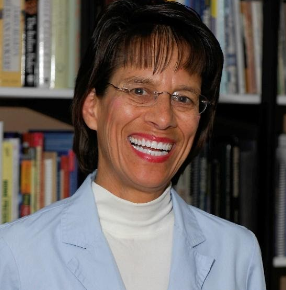
- Details
- By Jessica A. Rickert
Autism spectrum disorder (ASD) is a developmental disorder that affects communication and behavior, often with heightened sensory sensitivities. One in thirty-six children is diagnosed with ASD. Fortunately, this diagnosis can be made very young, so parents can access help early in the baby’s life.
The number of American Indian/Native Alaskan (AI/AN) children with ASD isn’t known, and a 2009 University of Minnesota study reported that AI/AN children are 13 percent less likely to be identified than white children with autism. ASD may not be less prevalent in Native communities; tribal children just aren’t being diagnosed.
ASD patients can and do achieve excellent dental health. These efforts should begin at birth. With ASD children, prevention is key because treating dental disease is exceedingly difficult for ASD patients.
When a baby finishes feeding, a warm, wet cloth can gently wipe the inside of the mouth. Toothbrushing should start when the first tooth appears; toothpaste is not necessary. Use a soft, infant brush with warm water. After age two years old, try using fluoride toothpaste the size of a grain of rice. The American Dental Association recommends twice a day for 2 minutes.
Tapping the lower lip softly with a silicone baby spoon or your finger can often get the baby to open, along with verbal cues. Coo over the wonderful opening. Massage is another option. Move your fingers in a circular motion beginning at the temple and work down to the jaw angle, then onto the cheek, to where the lower jaw angles forward. Little circles with a downward nudge usually works well.
Softly singing during oral care, the same song each time, will help. Although the ASD baby may not respond, it is still especially important for caregivers to repeatedly speak and sing in a gentle voice, letting the baby know what is about to happen.
“Now, we are getting ready to brush our teeth.”
“It feels so good.”
“Oh, you look wonderful with those clean teeth.”
The best positive reinforcement is repetition, enthusiasm, and praise. Let the child model your own good behavior, saying, “I am so happy it is my turn to brush my teeth!”
Electric toothbrushes require less time. A three-sided toothbrush can make brushing easier and quicker.
For nutrition, sugar is totally unnecessary. Sweets offered at meals are less harmful. Milk and water are the recommended drinks for all children.
If using a bottle at bed, use only water. To avoid tooth decay, never put milk or juice in a bottle in the bed with baby.
For toddler’s brushing routine, let them hold a favorite toy while sitting in a caregiver’s lap, perhaps with a weighted blanket or a pressure vest. Use singing, music, or a video. When older, let the child brush first, with the caregiver “Checking to see what a good job you are doing!” after. Sometimes, breathing patterns can help.
All babies should first see a dentist when they have their first tooth or before one year old.

If the ASD child has not been to a dentist, be sure to prepare for the first dental visit. There are amusing books which explain the dental office, so read these to the child many times. Ask your librarian for suggestions. Talk about your own “wonderful and fun” visits to the dentists. Repeatedly explain what will happen at the office.
Let the dentist know the special needs of the ASD patient; a sensory preference list can be shared with the dental staff. Ask for staged exposure to the office. Just sit in the reception area for ten minutes. Perhaps a “tour” of the office is in order when other patients are not there, when it is quiet. Introduce the staff by name without masks or glasses or gloves. If lights bother the patient, bring sunglasses. Bring a favorite “comfy.” This might be a toy, a blanket, clothing, a hat, or a music recording.
Dr. Jessica A. Rickert is a tribal citizen of the Prairie Band Potawatomi Nation. A graduate of the University of Michigan School of Dentistry, in 1975, she became for the first female Native American dentist.
Is there a time of day when the child is more co-operative? Make the visits for that time. Possibly make shorter appointments, such as for a short exam and oral hygiene instruction with fluoride varnish on the front teeth. Another appointment can include a professional exam and cleaning with fluoride varnish on all the teeth. Ask if the hygienist has a mild polishing paste, and suggest the hygienist please use the paste the child uses at home.
Excellent dental health is of paramount importance to ASD individuals, from birth to adulthood. Any speech development depends on natural, strong teeth. Digestion starts in the mouth, ensuring optimal nutrition for growth. Facial expression and recognition depend on natural, strong teeth. Those with ASD have many challenges in life. Why add dental suffering to their problems?
The Delta Dental Foundation has excellent resources for families that can make caring for folks with ASD easier. Also, the Autism Alliance of Michigan offers free support with finding a dentist for ASD patients as well as other beneficial services.
More Stories Like This
Seven Deaths in Indian Country Jails as Inmate Population Rises and Staffing DropsSen. Luján Convenes Experts to Develop Roadmap for Native Maternal Health Solutions
Senate Passes Bill Aimed at Missing and Murdered Indigenous Peoples Crisis
Johns Hopkins Collecting Tribal Success Stories from $1.5B Opioid Settlement
Arizona MMIP Task Force Holds Listening Session for Survivors and Families

